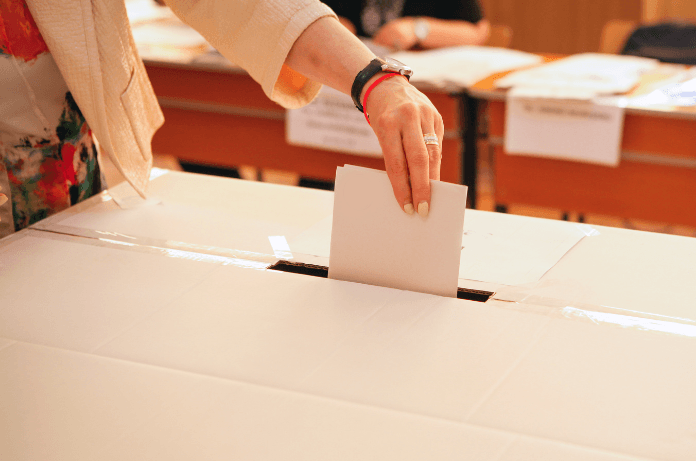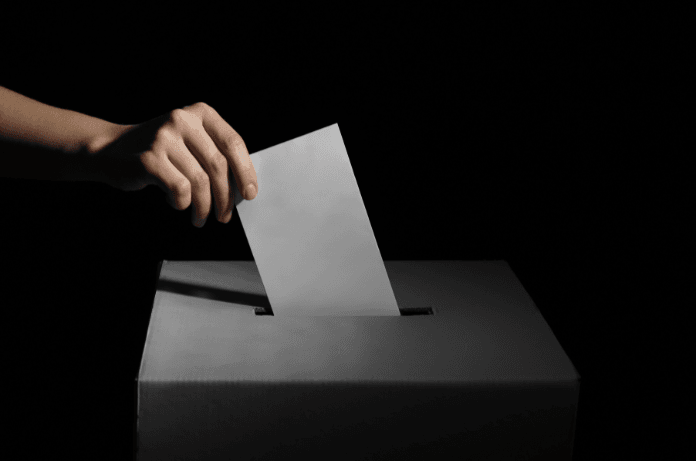Elections are complex events that go far beyond simple choices on a ballot. They represent powerful expressions of voting behavior or voting psychology. Each vote reflects a blend of emotions, beliefs, and motivations. Beneath the surface of campaign slogans and political speeches lies a deeper question: What really drives people to vote the way they do? Voters don’t always act on pure logic; they are influenced by a web of psychological factors, from social identity and group loyalty to cognitive biases that color, how they interpret information! Understanding these forces sheds light on why some voters remain steadfastly loyal to their political affiliations, while others shift with changing candidates or issues.
At the heart of this psychological landscape is the interplay of individual beliefs and group dynamics. In the voting booth, decisions are not just about policies—they are about identity, belonging, and values. As voters weigh their options, many find their choices shaped by powerful emotional appeals, societal pressures, and subconscious biases that they may not even fully recognize. This exploration into the psychology of elections uncovers how the minds of voters are primed by everything from personal experiences to media influence, ultimately revealing how psychological insights can help decode one of democracy’s most enduring mysteries: why we vote the way we do.
Key Psychological Theories in Voting Behavior
- Cognitive Dissonance: Voters often experience tension when their beliefs conflict with certain candidate traits or policies. To resolve this, they rationalize or adjust their choices to maintain alignment with their core values.
- Social Identity Theory: Political affiliations function as social groups, shaping voters’ preferences to align with the values and identity of their in-group.
- Confirmation Bias: Voters seek information that supports existing beliefs, reinforcing choices and sometimes creating echo chambers.
- Behavioral Economics: Voters’ decisions are influenced by biases like loss aversion, sunk costs, and perceived risks, especially under uncertain conditions.
Emotional Influence on Voting Decisions
The emotional influence on voting decisions plays a crucial role in shaping electoral outcomes. Voters often make choices based on their emotional responses to candidates, political events, or issues, rather than through pure rational analysis. For example, emotions like anger, fear, and hope can dramatically impact the way people perceive political candidates and issues. A candidate’s ability to evoke strong emotions can foster a sense of trust or distrust, swaying voters’ decisions. Research shows that emotions like anxiety about economic conditions or optimism about change can guide voters’ choices, making them more likely to align with candidates who speak to their emotional needs.

Additionally, emotions can create biases that make individuals more susceptible to political messages that resonate with their feelings, rather than facts or reasoned arguments. In fact, emotional appeals are often more persuasive than policy discussions in campaign strategies. By leveraging emotional triggers, campaigns tap into deeply held fears, desires, and values, ultimately influencing voter behavior in ways that are sometimes more powerful than logical arguments.
Role of Social Influence and Peer Pressure in Voting Behavior
Social influence plays a significant role in shaping voters’ decisions, as individuals often rely on cues from their social circles and the broader public when making political choices. The bandwagon effect is a prime example, where people are more likely to support a candidate or party that appears to be gaining popularity. This effect is amplified by public opinion polls, influential figures, and media portrayals of political success.
Voters may align with the perceived majority, driven by a desire to be part of the winning side or to avoid feeling left out. Additionally, social proof—where individuals look to others for guidance on how to behave—reinforces this tendency, making popular candidates appear more appealing due to the collective momentum behind them.
Beyond external trends, personal networks such as family and community can have a profound impact on voting behavior. These close-knit groups, whether they are based on familial ties, religious affiliations, or local communities, often maintain traditional voting patterns that influence individual choices.
People may feel a sense of obligation or loyalty to follow the political leanings of their family or community, further solidifying longstanding voting habits. The media, including news outlets and digital platforms, also plays a crucial role in shaping public opinion by framing candidates and issues in specific ways.
Role of Social Influence and Peer Pressure in Voting Behavior
Cognitive shortcuts and heuristics play a pivotal role in how voters make decisions, especially when faced with complex political choices. Party affiliation serves as one of the most significant cognitive shortcuts, as it allows voters to quickly identify with a candidate or party without deeply analyzing their policies or platforms.
This simplification reduces cognitive load and offers an easy decision-making pathway, even when voters may lack detailed knowledge about the candidates’ positions. By aligning themselves with a party label, voters are able to make relatively quick judgments, often relying on their emotional attachment to the party rather than evaluating each individual candidate’s policies.
Similarly, name recognition and familiarity also act as cognitive shortcuts, where voters tend to favor well-known candidates simply because their names are easier to recall. This familiarity reduces mental effort, as people are more likely to trust candidates they have encountered before, whether through previous elections or media exposure.
The availability heuristic further influences voting behavior, as voters are more likely to prioritize issues or candidates linked to recent or highly publicized events. For example, if an economic crisis or natural disaster is prominent in the media, voters may be more inclined to support candidates whose positions are seen as a direct response to those events.
Psychology of Non-Voters
The psychology of non-voters involves understanding the psychological barriers that prevent individuals from participating in elections. A significant factor is the feeling of disenfranchisement, where people believe that the political system is unresponsive to their needs, or that their votes won’t lead to meaningful change. This perception often leads to political cynicism, where voters feel disconnected or alienated from the political process. Such feelings can be rooted in a lack of trust in politicians or the belief that elections are controlled by powerful interests, making it seem pointless to engage. As a result, many individuals withdraw from political participation, feeling that their vote won’t have any impact on the outcome.
Another psychological barrier to voting is the phenomenon of learned helplessness, where individuals feel powerless to influence outcomes. Over time, people who experience consistent political disappointment or feel excluded from the decision-making process may develop a sense of helplessness, which discourages future participation. This sense of futility can lead people to believe that their vote won’t make a difference, reinforcing the decision to abstain.
The Evolution of Voting Behavior in the Digital Age
In the digital age, voting behavior has evolved significantly due to the influence of social media algorithms, misinformation, and microtargeting. Echo chambers and filter bubbles, created by algorithms that prioritize content aligned with users’ beliefs, reinforce existing ideologies, and limit exposure to diverse viewpoints, leading to greater polarization. Additionally, misinformation spreads rapidly online, and cognitive biases, like confirmation bias, make voters more susceptible to false information that aligns with their existing views, distorting their understanding of candidates and issues. These factors influence voting decisions, often leading to choices based on misleading or incomplete information.
Furthermore, the rise of microtargeting in political campaigns allows candidates to use data analytics to target voters with personalized messages that appeal to their emotional and ideological concerns. While this can increase engagement, it also raises ethical concerns about manipulation. Understanding these psychological factors is crucial for voters to make more informed decisions and for campaigns to promote healthier democratic engagement. By fostering critical thinking and broadening exposure to diverse viewpoints, voters can counter these influences and contribute to a more balanced electorate.

